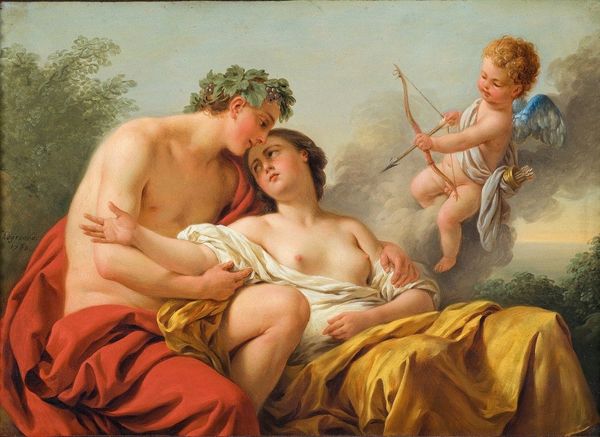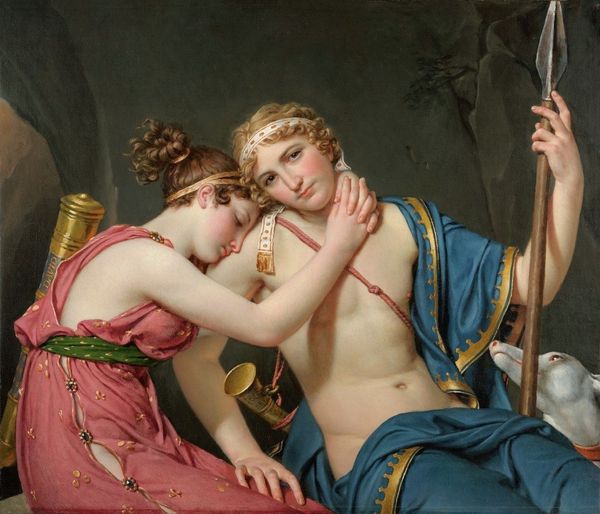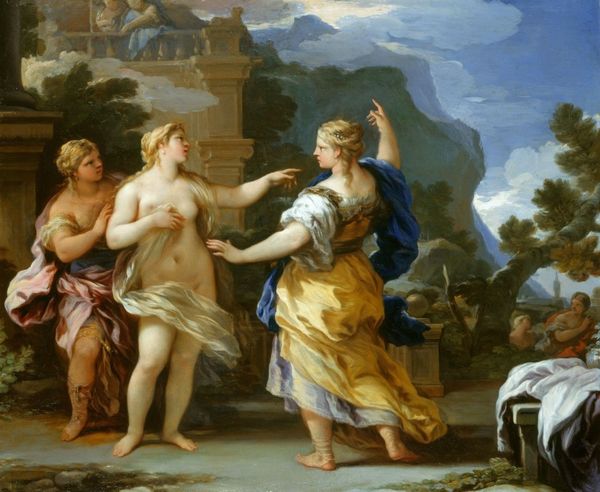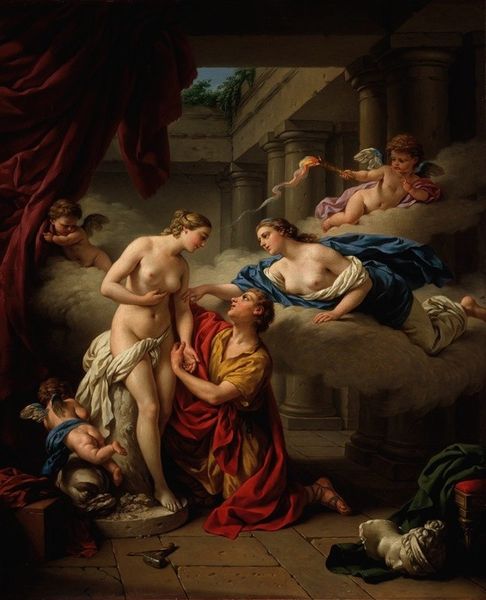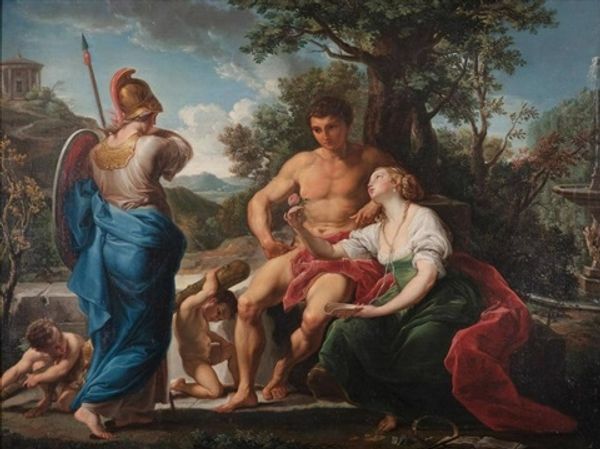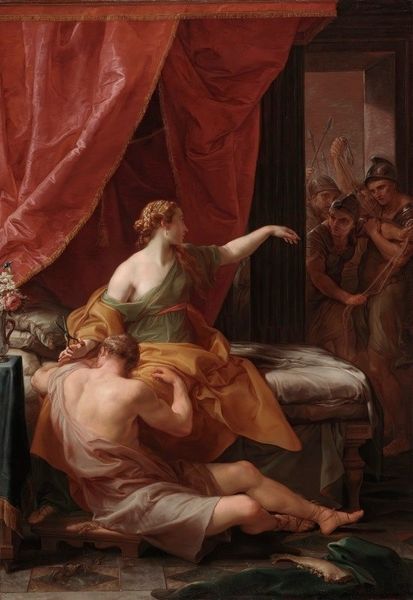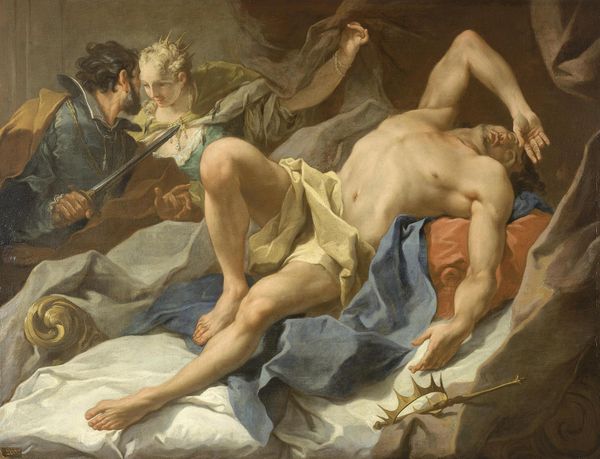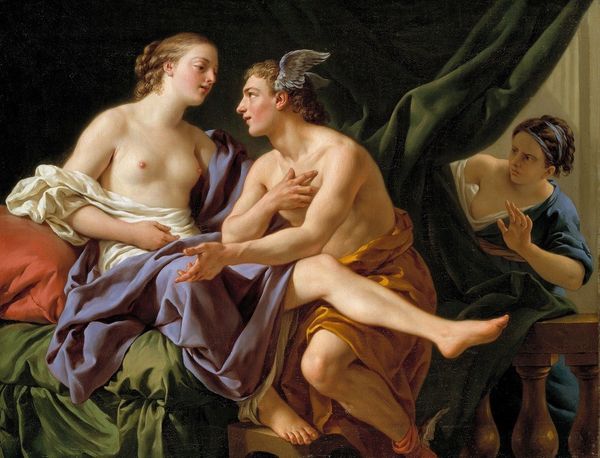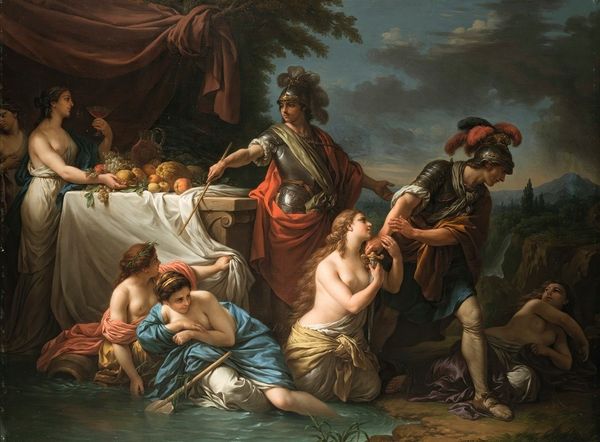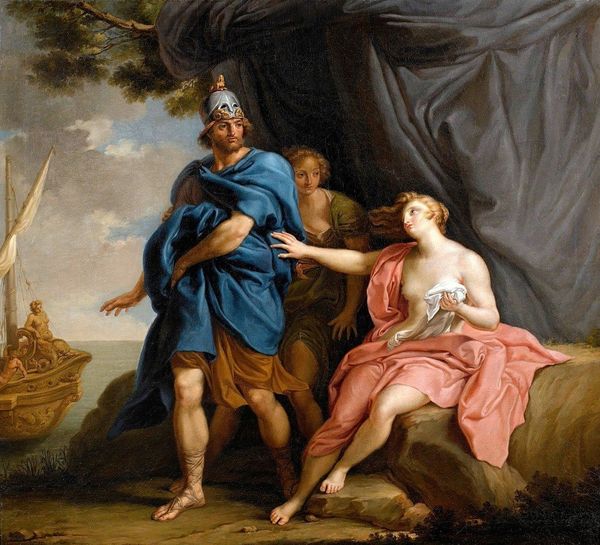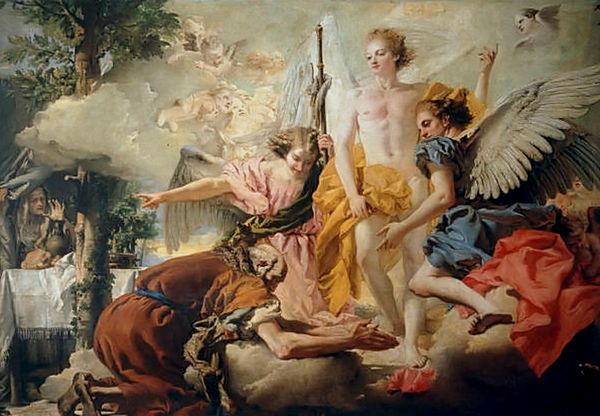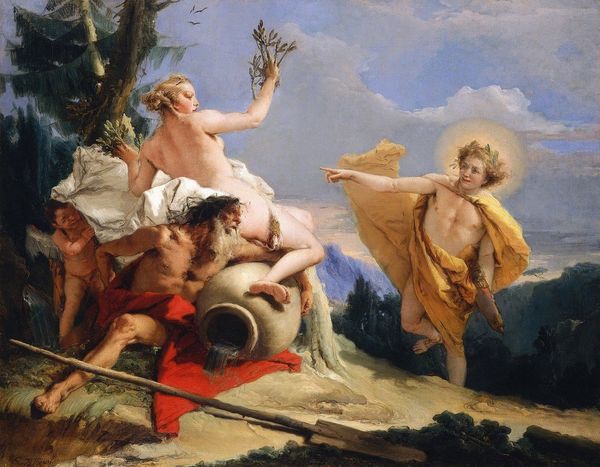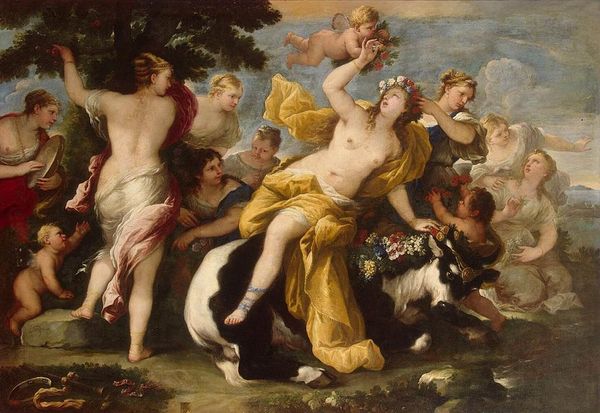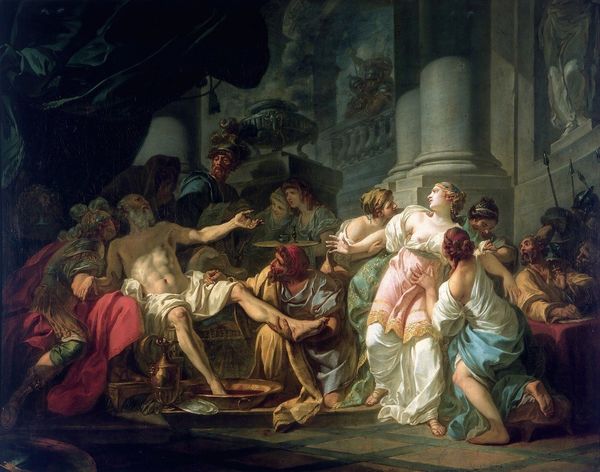
Copyright: Public Domain: Artvee
Curator: Good morning. We are standing before Louis-Jean-Francois Lagrenee’s painting “Aurora and Tithonus,” created in 1763, using oil paint. Editor: It's a little heart wrenching, honestly. You have this youthful goddess, almost glowing, and then Tithonus beside her, draped in red cloth but still so, so mortal. The light just seems to drain from him as it pours onto her. Curator: Absolutely. The painting depicts a scene from Greek mythology where Aurora, the goddess of dawn, falls in love with the mortal Tithonus. She asks Zeus to grant him immortality but forgets to ask for eternal youth. Editor: Whoops! Major oversight. He just gets older and older, basically forever. You know, it feels like a visual warning against chasing eternal life without considering what that really means. Are we really seeing her turning away from him, almost repulsed? Curator: Perhaps. Lagrenee was working within the conventions of history painting, a genre valued by the French Academy, to comment on royal patronage and public morality. The cautionary tale, though set in the classical past, resonates with contemporary concerns about power and aging. The figures, while idealized, also carry the weight of moral judgment. Editor: You can see that academy influence in the poses – all graceful lines and flowing drapery. It’s beautiful, but you also get a sense of… theatricality, almost staged. The white horses and roses almost mock Tithonus mortality. Do you think Lagrenee meant for us to side with the Goddess? Curator: Well, it depends on the values held by Lagrenee's potential viewers, no doubt. He created the piece while trying to join the Academie Royale. As an artwork meant to display his prowess, the intention may be primarily self-serving: Lagrenee meant to showcase his mastery of complex compositions and ability to convey emotion. The narrative could even be subservient to that goal. Editor: Fair enough! You know, standing here with this piece really gets me thinking about the roles of patrons of the arts. Like, were the wealthy of the 18th century trying to achieve their own type of immortal life by enabling artworks and creative minds? Curator: The act of patronage often came with expectations regarding content and style; in a very material sense, those expectations shaped culture as a whole. Lagrenee would need to strike a fine balance when trying to signal a moral compass and court certain groups to solidify his position within an institution. Editor: So true, it's fascinating how art becomes this stage where power, morality, and even mortality play out their parts. It's always much deeper than what appears on the surface, I'd say. Curator: Precisely. These paintings were as much about cultural negotiation as they were about artistic expression. I'm so grateful to work alongside you on this, it makes our current museum practice even more important to critically engage.
Comments
No comments
Be the first to comment and join the conversation on the ultimate creative platform.
